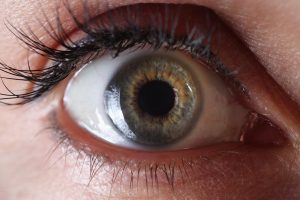 According to a new nationwide study, the eyes of older adults may provide a possible indication of Alzheimer’s disease. Amyloid plaques found in the eyes’ retinas may be an indicator of similar plaques in the brain, which is a hallmark of Alzheimer’s disease. Researchers are hoping this can provide a more visible biomarker for detecting the disease risk.
According to a new nationwide study, the eyes of older adults may provide a possible indication of Alzheimer’s disease. Amyloid plaques found in the eyes’ retinas may be an indicator of similar plaques in the brain, which is a hallmark of Alzheimer’s disease. Researchers are hoping this can provide a more visible biomarker for detecting the disease risk.
Amyloid plaques are misfolded protein deposits that form between brain cells, which can cause abnormal function, eventually leading to neuronal death. They are known as a hallmark of Alzheimer’s disease (AD) and are the focus of many investigations designed to help reduce or prevent their formation.
The Formation of Amyloid Plaques
Advertisement
Recent discoveries have found that amyloid plaques not only form in the brain, but can also accumulate in the retina of the eye in patients clinically diagnosed with Alzheimer’s disease. Researchers believe this may suggest similar pathologies in both organs.
A small study led by scientists at the University of California San Diego School of Medicine sought to find neurodegeneration risk in people with low levels of amyloid and compare them to people with high retinal and brain amyloids.
By looking at the retina of the eyes, researchers found that the presence of retinal spots in the eyes correlated with brain scans that showed higher levels of cerebral amyloid plaques. Researchers believe that these findings suggest that non-invasive retinal imaging may be helpful in detecting early-stage Alzheimer’s disease risk.
“This was a small initial dataset from the screening visit. It involved eight patients,” said senior author Robert Rissman. But, these findings are encouraging because they suggest it may be possible to determine the onset, spread and morphology of AD — a preclinical diagnosis — using retinal imaging rather than more difficult and costly brain scans.
We look forward to seeing the results of additional timepoint retinal scans and the impact of solanezumab (a monoclonal antibody) on retinal imaging. Unfortunately, we will need to wait to see and analyze these data when the A4 trial is completed.”
This study is only the beginning of the research into the significance of amyloid plaques in the retinas of the eyes. Rissman and his team believe that the next step will be to conduct a more extensive study to better document the relationships between retinal amyloid and cerebral amyloid over a more extended period.
